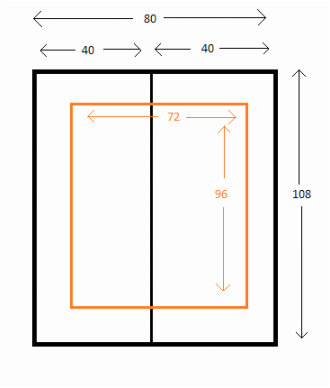The first thing to do is take those numbers in feet and change them to inches. Instead of 6' by 8', we need to think of it as 72" by 96". Quilting fabric usually comes in widths ranging between 40 and 44 inches. I'm going to assume 40, because it's better to have too much than too little.
If we double 40, we get 80. Since 80 is generously bigger than 72, she won't need to sew more than two widths of fabric together. So we know that we will need two times the longer dimension of the quilt, which is 96. So, if we double 96, we get 192 inches. Divide that by 36 (because there are 36 inches in a yard) and voila, we get 5.33 yards. Of course, because we don't want to have to be super precise, and because shops don't cut perfectly, and everything else, we need to increase that amount. So, I would advise her to buy 6 yards of fabric.
Keep in mind that my method above is assuming she is doing her own quilting. If she is sending the quilt to a longarmer, she needs to add 8 inches to each dimension (most times the longarmer will describe this as "four inches on each side"). So in that case, we would be looking at a backing that needs to be 80 by 104. The 80 is okay in this case; we were assuming we would only get 40 inches of usable fabric when in reality we will probably get a little more. Plus, though I'm not a longarmer (and I don't even play one on tv), I think most can get by with a smidgin less than four inches all around. But we would still need to double the 104 number to come up with 208. Divide that by 36 and we get 5.778 yards. Personally, I'd probably still go with 6 yards, but if she wanted to be really safe, she could get 6 1/4 yards.
So, that wasn't too painful, was it? I'll talk about wide backings and T-shaped backings in another post.


 RSS Feed
RSS Feed